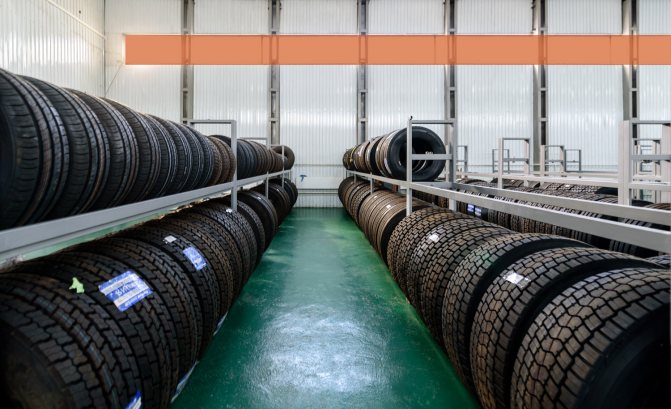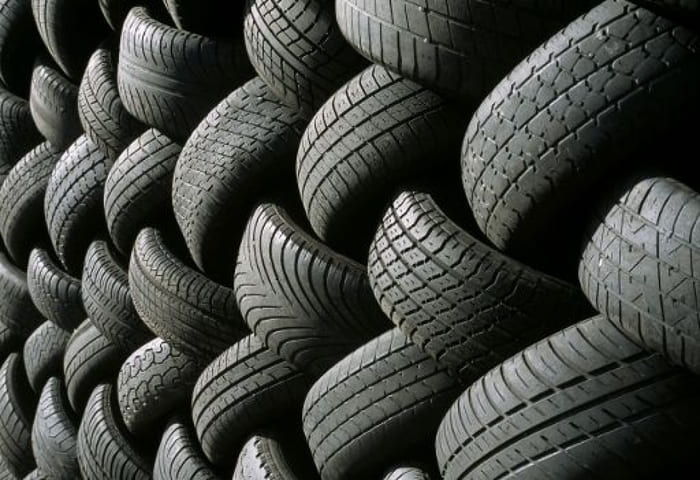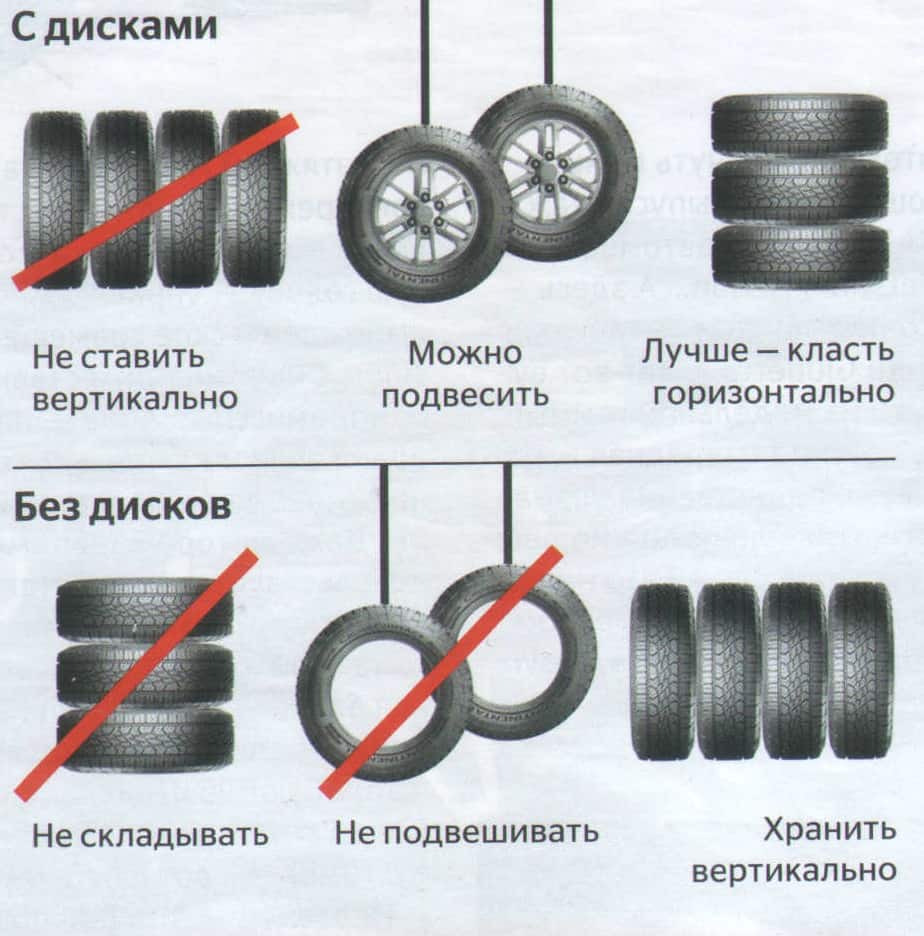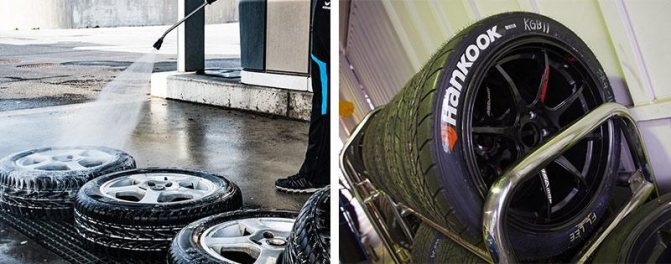Many car enthusiasts do not think about the expiration date of their tires, monitoring only the remaining tread height. “Snowdroppers” who use their car exclusively from the thaw to the first frost, or those who use the car only for trips to the country, even consider tires to be almost eternal, since the tread does not have time to wear out. Is it really? And do tires have a specific expiration date?
Tire expiration date
GOST defines the warranty service life of tires as five years. The further fate of the tire is determined by the car owner himself, based on its condition. Some tire manufacturers provide a ten-year warranty on their products, but this is rather an exception to the rule - usually the shelf life of tires is five to six years.
Why is a tire considered “damaged” after this period, even if the tread has not yet worn out and there are no cuts or hernias on the tire?
Over time, rubber ages, oxidizes, becomes more brittle, and microcracks appear on it, although invisible to the eye, but affecting the characteristics. Consequently, tire reliability is significantly reduced. Moreover, this applies not only to those tires that were actively used, but also to those that were peacefully lying in a warehouse, waiting in the wings. Therefore, in the name of safety, it is worth stopping using tires after five to six years.
Tire expiration date - Debunking the myths
Consumer disputes over the age of tires have not subsided for several seasons. Buyers are worried that the warranty period for tires is limited to 5-6 years according to GOST, and after this period the rubber becomes unusable.
Is this really so, read this article.
Tire shelf life
Manufacturers of most brands set a shelf life of 5 years for their products and a service life of 5 years.
.
The shelf life of tires is the period during which they retain their performance when stored correctly.
Completion of this period does not mean that the tires have become unusable
. A shelf life of 5 years is given by manufacturers because, by law, they cannot set a shelf life higher than the service life. Tires that have been stored for more than 5 years cannot be called damaged or defective; their technical characteristics may be slightly reduced. American researchers claim that the storage period for “shoes” must be at least 10 years. Experts from Germany are confident that it cannot exceed 6 years.
Tire expiration date
The shelf life of tires is the warranty period during which the manufacturer is responsible for the quality and condition of the tire if it was used for its intended purpose without violating the operating rules.
According to Russian legislation (GOST 5513, GOST 4754-97), the service life of tires is 5 years from the date of manufacture.
How to find out the manufacturing date of tires?
You can find out the age of tires using a special DOT code. Tires produced after 2000 in the DOT code contain two pairs of numbers, where the first pair indicates the week number of the year, and the second - the year. Earlier tires before 2000 have 3 numbers, where the first two digits are the week number, and the last one is the year (see the decoding in the photo).
Determination of the average shelf life of a tire according to GOST and operating conditions.
— The symbol ZR denotes tires for high-speed cars. They are recommended to be used at speeds above 240 km/h. for up to 6 years
— Tires with the H symbol are used at a maximum speed of 210 km/h. within 5 years.
— The S sign symbolizes the maximum permissible speed of 180 km/h. and operational life of 4-5 years.
Shelf life according to manufacturers estimates
Most tire manufacturers do not agree that tires have a 5-year shelf life. Each company has its own established opinion on this matter. We analyzed several of them and the information they posted on their official websites.
Michelin
The French tire manufacturer Michelin has become famous for its active fight against the idea that tires are rapidly aging as a perishable product. Her Tires Are Not Bananas awareness campaign created a lot of buzz in the automotive community. According to the representative office, several test trials were carried out in Saudi Arabia, South Korea and Germany. As a result of the tests, no difference was found between new tires and tires stored for 3 years. They were tested for various characteristics such as rolling resistance, strength at high speeds, etc. Tires with a one-year service life were approximately equal in performance to 10-year-old unused tires.
Michelin draws the attention of car owners to the fact that tires are not a perishable product, their shelf life is not as important as their service life, which begins from the date the tires are installed on the wheels. It is from this moment that the tire is subjected to all tests: pressure, temperature changes, wear, contact with uneven and sharp surfaces, etc.
Continental
On the Russian official website of Continental we found the following information on the expiration dates of tires.
“When a tire is stored in the correct position and recommended conditions, it will not lose its original balanced performance characteristics for a period of 5 years from the date of manufacture of the tire.
A properly stored, unused tire up to 5 years old can be sold as a new tire and used normally.
Continental recommends that all tires (including spares) that have a production date of more than 10 years on the sidewall be replaced with new ones.”
Nokian
The following information is posted on the Nokian official website:
“The lifespan of tires is not determined by law, but tires can only be considered “new” if they were manufactured within the last five years. The recommended service life of tires is six years, and the recommended maximum period is 10 years.”
The opinion of our experts, based on many years of experience, coincides with the opinion of the manufacturers: the shelf life is 5 years + service life up to 10 years. Moreover, in our opinion, more “adult” tires are of higher quality.
To ensure that the service life of tires remains as long as possible, they are stored in compliance with all rules and recommendations. The main condition is a cool, ventilated, darkened room away from oils, paints, ozone, and heat sources.
Tire storage conditions
Rubber products tend to lose their performance over the years. To prevent and slow down this process, manufacturers add polymers to the rubber mixture. They prevent oxidative processes that occur due to the interaction of protectors with oxygen and ozone.
Listed below are the basic conditions for proper storage of tires in accordance with GOST 24779-81:
- Maintaining a constant mode without sudden jumps, small temperature fluctuations from -30°C to +35°C are allowed;
- Provide a low humidity level of 50-80% in a dry, cool, ventilated area;
- Avoid direct sunlight, use darkened hangars, shield heat sources;
- Keep away from heat sources;
- Tires should not come into contact with corrosive copper materials.
- Avoid bending, loading or positioning on uneven surfaces.
- Do not allow oils, solvents, acids, alkalis, fuels and lubricants to come into contact with the surface of the tires. It is prohibited to lay tires on a wet and dirty surface.
- During the warm season, when storing tires outside, they should be covered with light-proof material and raised above ground level to ensure ventilation and prevent the greenhouse effect.
- Storage on reflective, light- and heat-absorbing surfaces is prohibited.
- Keep away from chemicals, oils, paints, open fire sources, and electric motors that produce ozone.
- Used tires must be washed and dried.
- Store tires without rims in an upright position.

The service life depends on many factors: vehicle load, road quality, driving style, kilometers traveled, tire damage, etc. To increase their service life, adhere to the following rules:
How to increase the service life of tires:
- Check tire pressure every 2-3 weeks. With reduced pressure, tire wear increases equivalent to the % reduction. For example, a decrease in pressure by 15% can lead to a decrease in service life by 15%. Over-inflated tires are less scary.
- The wear of the front tires is always significantly higher than the rear ones, so it is recommended to change them after some time, carefully monitoring the direction of the tread pattern and the direction of rotation.
- Correct installation of tires in relation to the rims. If the direction does not match, then performance characteristics are significantly reduced.
- To prevent damage to the tire sidewalls, avoid driving close to curbs and high protrusions.
- Wash off dirt from the surface of the rubber and from deep grooves with special cleaning agents.
- Maintain a smooth driving style without harsh brakes or quick starts.
- Do not overload the vehicle beyond normal limits. 20% excess weight leads to a 30% loss in tire life.
- Monitor wheel balancing and check alignment angles annually.
Conclusion:
The main condition for a long service life of tires is: - high quality products, - careful operation, - proper storage of rubber in the off-season, - timely diagnostics.
The age of tires during standard storage is an insignificant non-determining factor that should not be taken into account when purchasing them.
Previous article Next article
Tire production date
It is important to remember that the tires you install on your car may well be from different batches and with different production dates. This will not affect the behavior of the car in any way. However, it is still necessary to pay attention to the production date of tires in order to replace old ones in time. This advice will come in handy when purchasing both new and used tires. By checking the production date, you can protect yourself from buying old tires that will quickly become unusable.
In order not to get into trouble and not to purchase a tire “with an expired expiration date,” when purchasing, you need to check its production date. This date, in the form of four digits, the first two of which indicate the week and the second two the year, is indicated on the sidewall of the tire. That is, the code “3112” means that the tire was released in the thirty-first week of 2012.
Shelf life of tires
This is the period during which the manufacturer guarantees the preservation of the properties of the product, provided that the consumer complies with the maintenance rules. The end of the shelf life means that the appearance and quality of the product may deteriorate, but it can still be used for its intended purpose.

The material from which tires are made is subject to natural aging under the influence of chemical and physical processes. To prevent the loss of basic properties, special fillers are added to the polymer composition at the production stage, which prevent ozone destruction of rubbers. Such manipulations make it possible, with proper storage of the products, to ensure the performance qualities of a car tire at the level of a new one.
Important note: shelf life and guaranteed shelf life are different concepts. According to GOST, the minimum age of a tire is 5 years. This means that during this period the wheel tires must meet the stated technical characteristics. The manufacturer is responsible for his product, which is a guarantee for the buyer.
We recommend
“A tire goes flat on the rim: how to solve the problem” Read more
Recently, many experts from America have stated that a limit of 10 years should be set for the life and storage of car tires. European manufacturers insist on much shorter shelf life - up to 6 years. This restriction also applies to new products.
According to GOST 24779-81, pneumatic tires should be stored as follows:
- Tires should not come into contact with corrosive or copper substances. Prolonged one-sided loading, piling of products on top of each other, bends, and reliance on sharply protruding elements are also unacceptable.
- When storing and transporting rubber products, they should not be affected by ozone, acids, oxygen, light, heat, mineral oils, organic solvents, fuel, alkalis, lubricants.
- Car tires should be stored at a temperature range from 25 to 35 °C. They should not be exposed to direct sunlight at a humidity less than 80%, as well as thermal contact with the heater.
- Products intended for repairing a worn tire by replacing the worn out tread must be thoroughly washed and dried.
- The aging process can be significantly slowed down by storing tires in a dark and cool place. In a damp room with sudden temperature changes, car tires quickly lose their quality, elasticity and strength.
- When storing tires outside, they are raised above the ground, providing ventilation and free air flow, and covered with moisture-proof, opaque material.
- It is strictly forbidden to store car tires on wet, oily, or contaminated with petroleum products or gasoline surfaces.
- The storage location should be located away from open flame sources.
- Containers with solvents, fuel, chemicals, oils, acids, paint cans or disinfectants should not be placed near car tires.
- The ozone concentration level from sources that may be located near storage sites should not exceed 0.08 ppm.
- Do not store tires on surfaces that reflect (snow) or absorb (black soil) heat.
- The tire should not be used to store tools or as a work surface. It is forbidden to place a lit cigarette on it.
Car tires of such well-known brands as Bridgestone, Dunlop, Goodyear can serve their owners for more than 10 years. This expiration date is generally accepted in all countries. But German tires must be replaced with new ones within 5 years from the date of their release.
Although, again, the shelf life of car tires, both new and those that have served for more than one season, is greatly influenced by their storage conditions. For example, Finnish products must be replaced 3–5 years after 5 years of operation, subject to annual quality control.
Russian legislation does not establish the maximum possible shelf life for wheel tires, but experts believe that a tire that has been in a warehouse for 5 years fully retains the technical characteristics laid down by the manufacturer.
How to extend the life of tires
What is required to ensure that tires do not age prematurely? The most important thing is proper storage. Tires should be protected from direct sunlight and moisture and not exposed to excessively high or low temperatures.
If you store seasonal tires mounted on a rim, it is best to hang them or stack them on top of each other rather than stack them vertically. Tires without rims, on the contrary, are best stored vertically, but they cannot be hung or stacked. Following these simple rules will avoid deformation of the tire, prevent the rubber from cracking and preserve all the properties of the tire.

Lifetime. What factors influence it?
There are only five indicators that affect shelf life:
- Machine load level. For example, summer tires on passenger vehicles do not wear out as quickly when driving in the city than similar types installed on vehicles for transporting large loads. Service times vary.
- Tire size. The tires will wear out when cornering if they are too wide. Low-profile varieties wear out when the driver encounters uneven surfaces and other obstacles.
- Driving style. The shelf life of products is reduced due to reckless turns, high speed, and sudden braking.
- Conditions on the road. Tires last longer if they are driven more often on level surfaces. But provincial off-road conditions have a much worse effect on these products.
- Mileage also becomes a determining factor. It also affects service time.
How to avoid getting into trouble when buying?
Tires should be purchased from authorized dealers who comply with the storage conditions prescribed by the standards. Otherwise, there is a risk of buying tires that, although new, have already suffered from improper storage. Alas, there are often cases when rubber, before reaching the store counter, lies somewhere in the backyard, open to all the winds and bright sun. So, such savings, at best, result in a forced purchase of new tires after just a season, or even completely jeopardize your safety.
The best solution would be to purchase tires from modern models no older than four years old - in this case, you will buy a product that is known to be of high quality and will enjoy the purchase. It is best to choose tires from well-known brands: their quality has been tested by time, and the model lines are quite wide and allow you to find tires for every taste and for any car.
We hope that, based on the above tips, you can easily choose the right tires that will allow you to get maximum pleasure from driving your car.
Tire life
The period during which the manufacturer guarantees the use of tires in accordance with the declared characteristics is the service life of the tires. Most tire manufacturers confidently claim that their products will last up to 10 years. However, in practice, this theory is not always correct, since owners change tires after 5-6 years. And sometimes, the period is even shorter, due to various factors.
When trying to estimate the shelf life of tires, you should take into account the mileage. Some people don’t travel 10 km a day, while others manage to clock up 100 km daily. In addition, the type of transport is taken into account: cars - 45 thousand km, small trucks 60 thousand km, large-capacity trucks 70 thousand km.
There are bridges in the tread grooves. If the tread surface has worn down to these jumpers, then the tire has exhausted its service life. It is possible to determine the level of wear by eye or using a measuring device - a depth gauge. The minimum level on summer tires is 1.6 mm, and on winter tires 4 mm. Moreover, measurements should be carried out on the most worn area. With the specified parameters, the wheels should be replaced.
Famous manufacturers put the numbers on the tread: 8,6,4. As the numbers wear down, you can judge the degree of wear.
What affects the shelf life of tires for a car?
Winter tires wear out quickly with active use. Driving style influences. Regular skidding, braking, and extreme driving negatively affects the condition of the wheels, shortens their shelf life, and speeds up the need for replacement.

The nuances of seasonal storage of winter tires for a car
Other factors:
- weight, carrying capacity of the vehicle. It is important to select tires according to the maximum permissible load index;
- low profile tires. They wear out faster due to tapping on the discs on bumps and holes;
- low quality rubber. Chinese companies are guilty of this; there are a lot of defects on the market now;
- bad roads. There are already jokes about them. Sad reality.
Tires fail faster when driving in contaminated areas in winter. Minor scratches and superficial punctures lead to serious damage and speed up the purchase of a new car.
Each tire must be marked by location - front right, rear left, etc. You cannot change the location.











